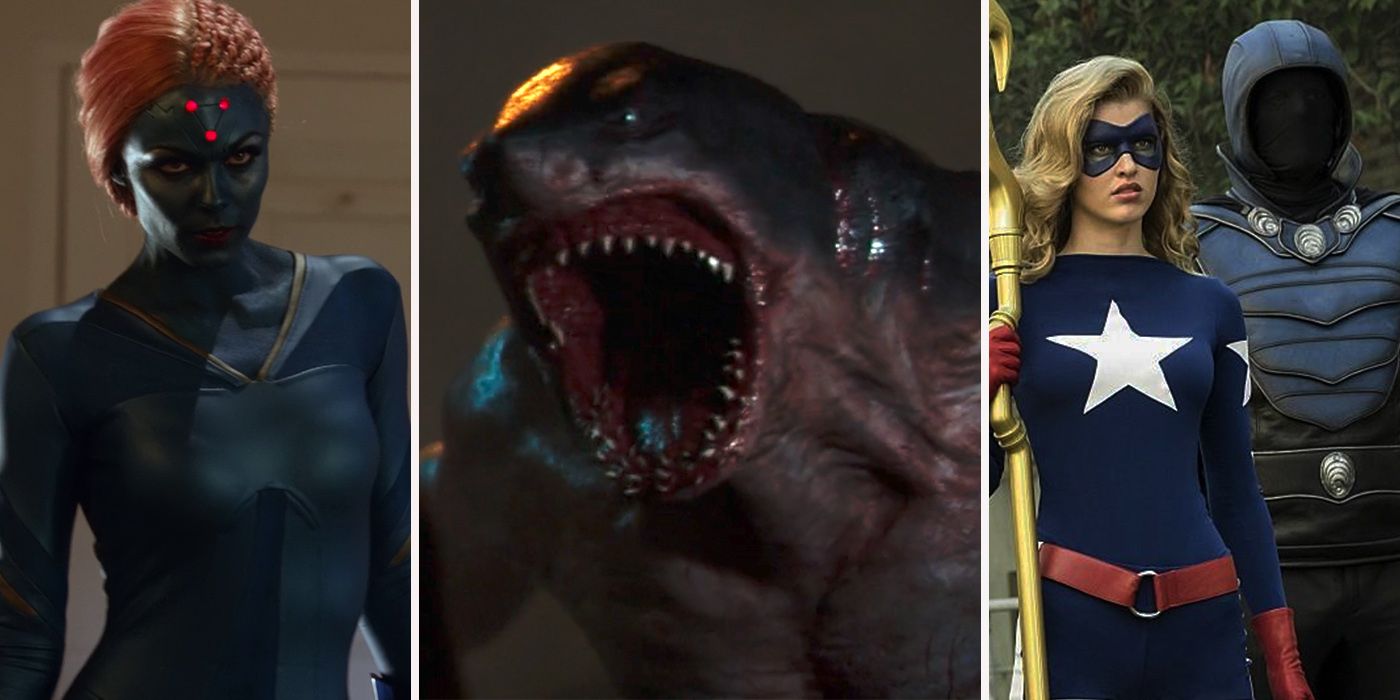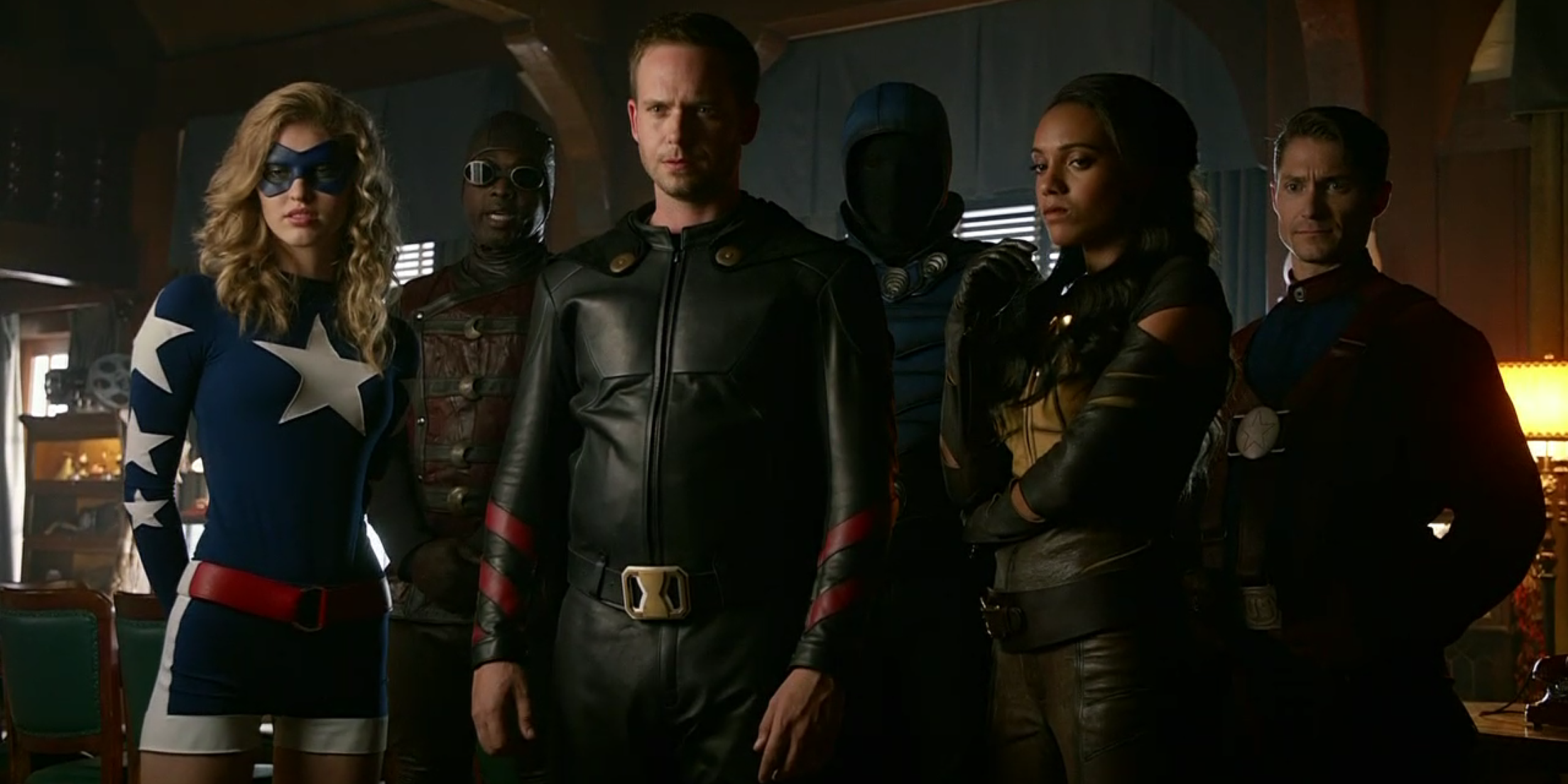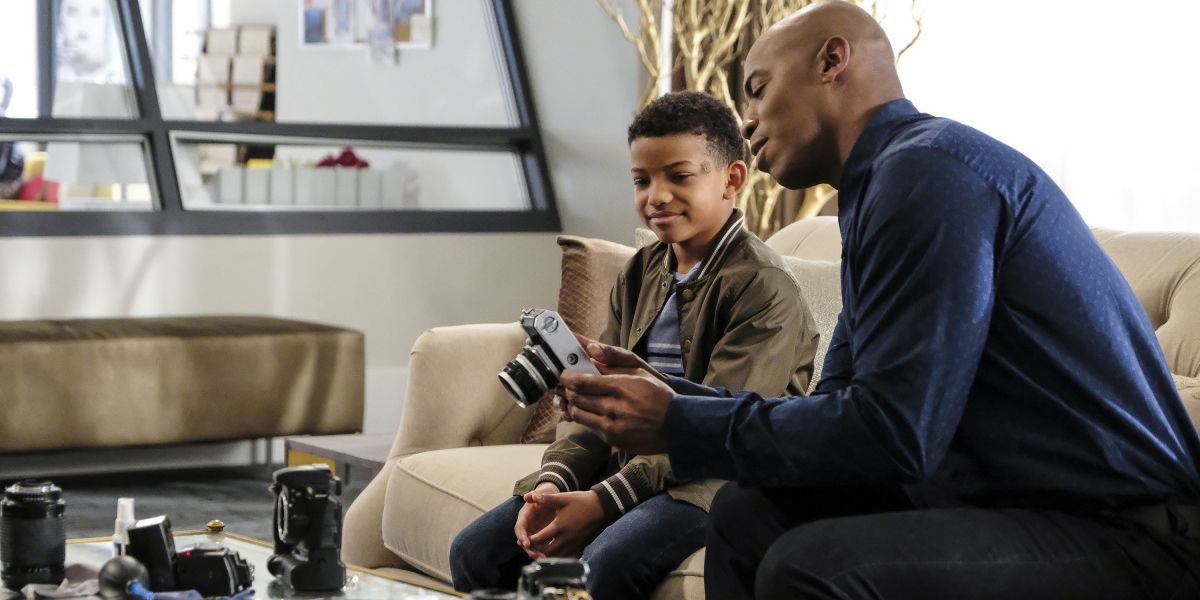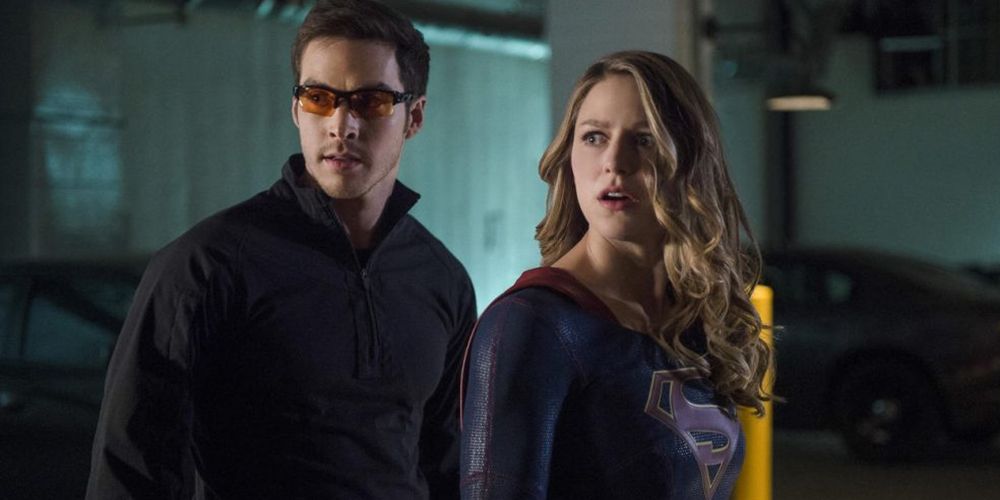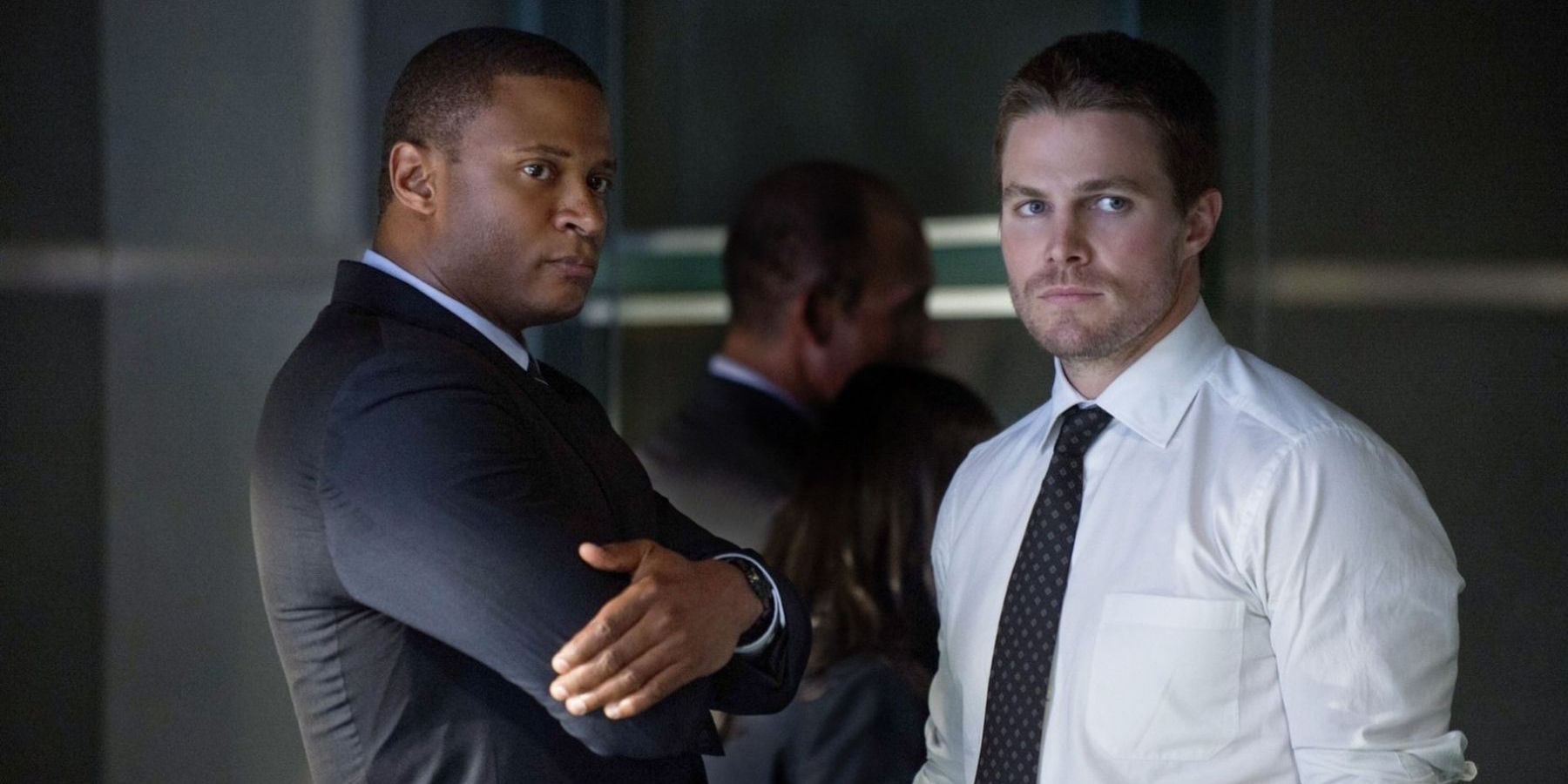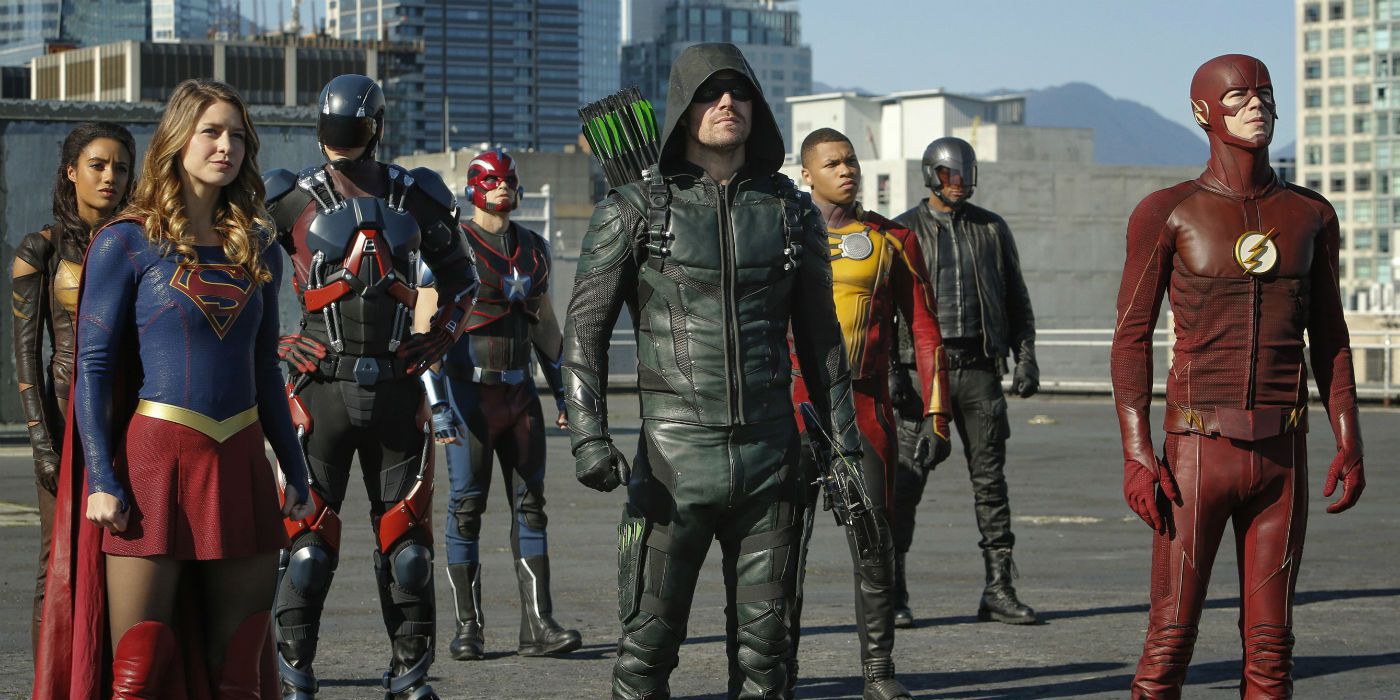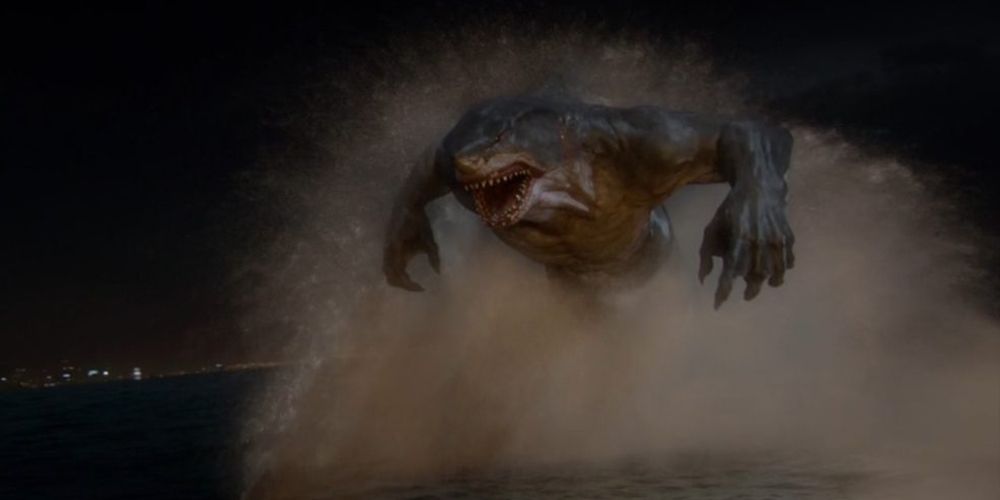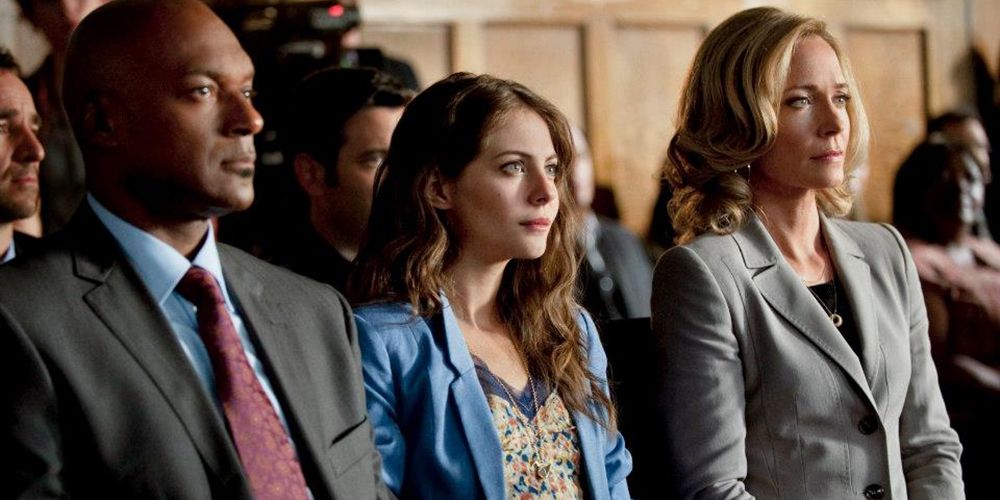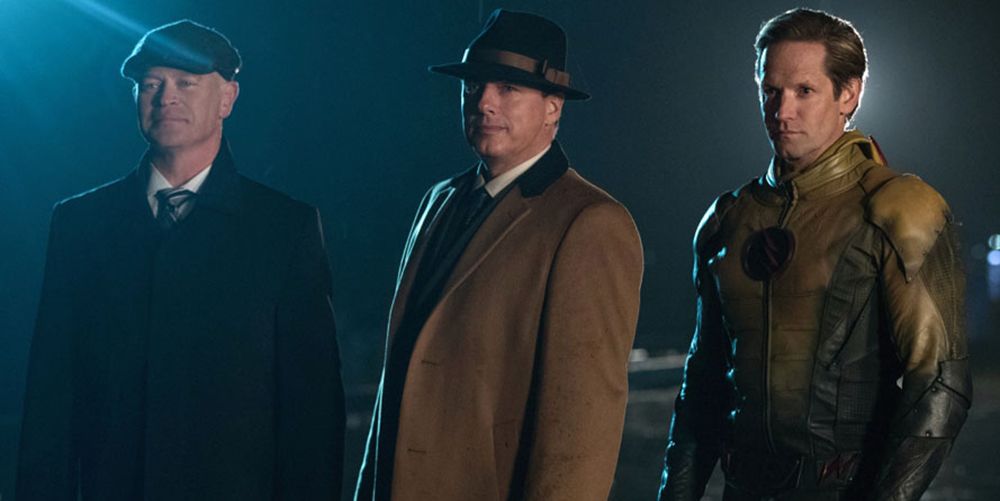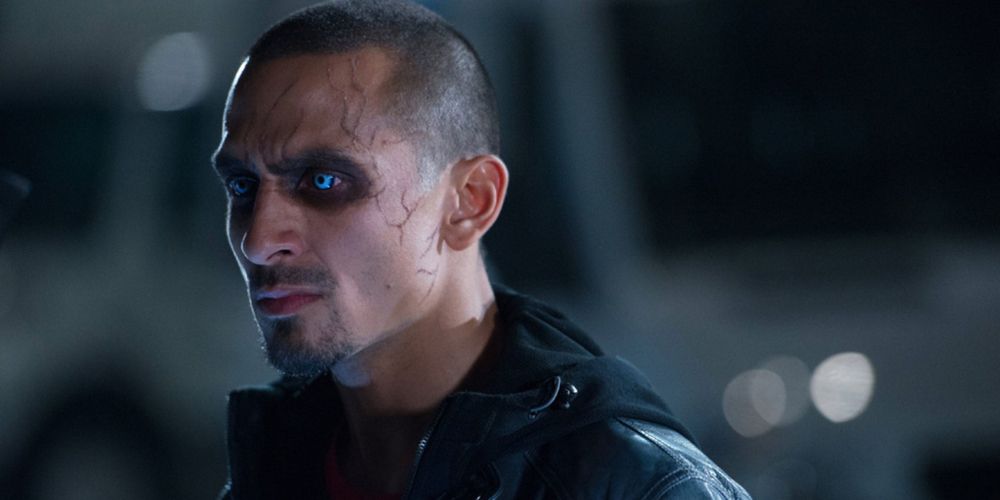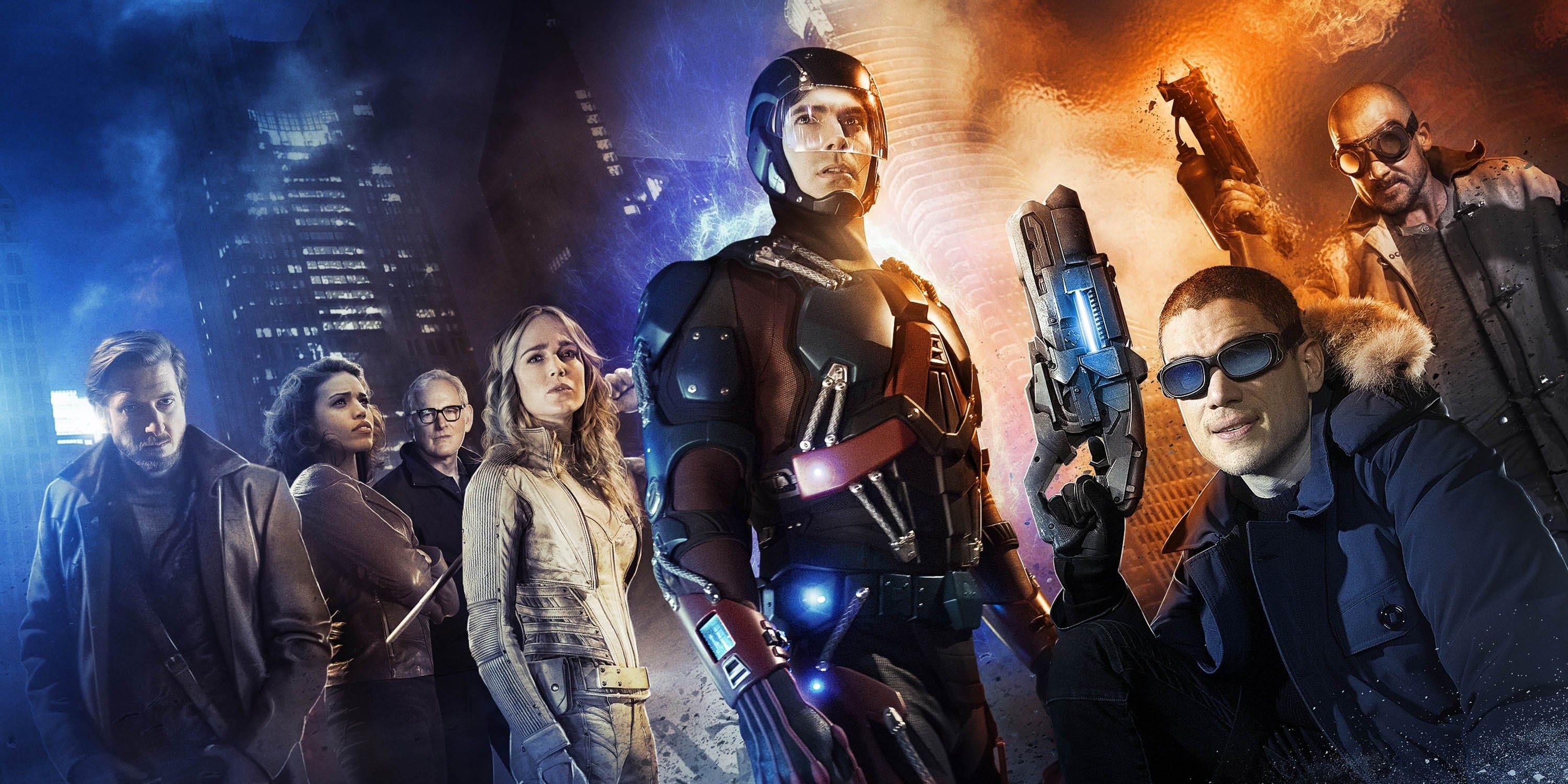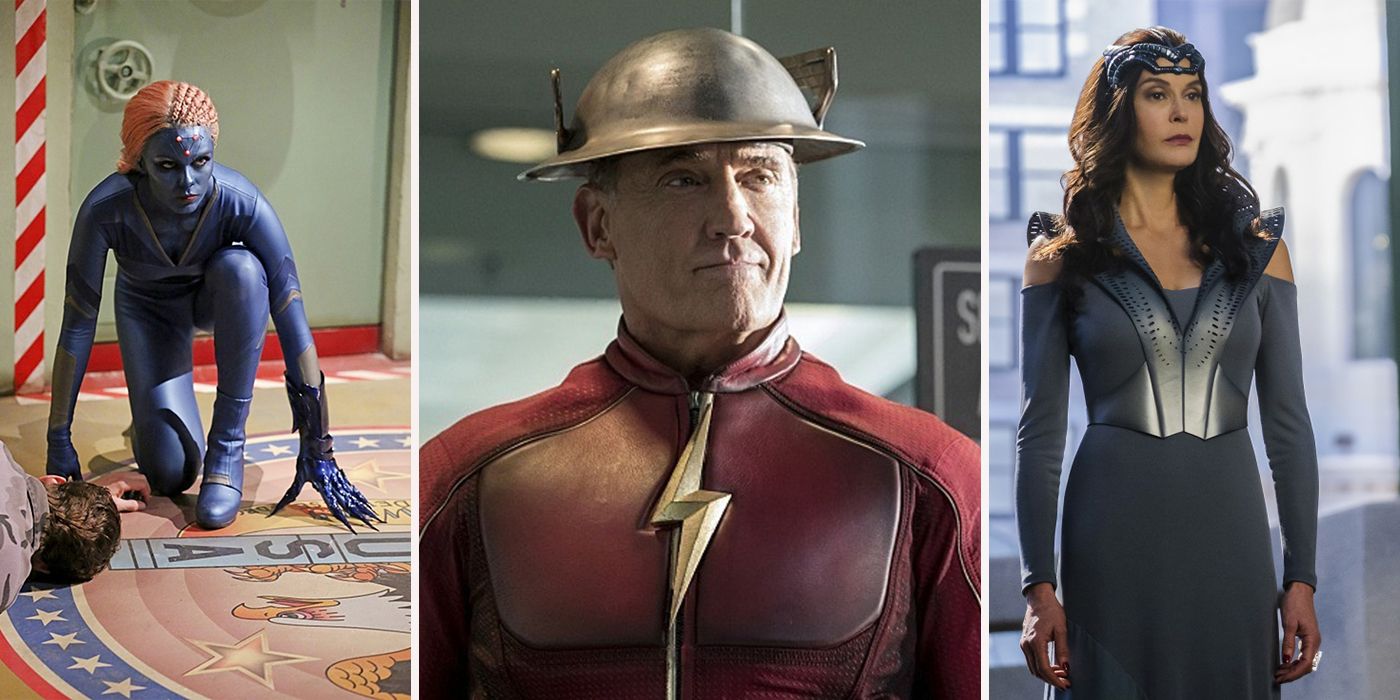For the past five years, The CW's Arrowverse has spearheaded DC-centric content on television. While Arrow’s gritty reimagining of the Green Arrow mythos kicked things off in 2012 with a world not too disparate from Christopher Nolan’s Dark Knight trilogy, The Flash’s 2014 debut introduced The CW’s nascent superhero franchise to the "real world" setting of the world. Following the advent of scientific abnormalities with Speedsters and meta-humans, tackling time travel and alternate universes was the next step in developing the Arrowverse’s continued growth. All of the above and much more has been accomplished with varying degrees of success, though there have been a few admitted missteps along the way, and it seems the producers and writers behind the scenes remain ambitious.
RELATED: 8 Useless Arrowverse Characters We Want Gone (And 7 We Desperately Want Back)
Thus, here we stand four shows (five counting The CW Seed’s Vixen) and 12 long seasons later, awaiting Arrow’s sixth run, The Flash’s fourth season and a third effort from both Supergirl and Legends of Tomorrow. As the wait for what is ahead slowly draws to a close, we want to examine a few of the Arrowverse’s most incredible achievements, so far, as well as the things that all four series still need to work on getting right in order to reach the pinnacle of TV superheroics.
15 RIGHT: SHEDDING LIGHT ON LESSER KNOWN CHARACTERS
The CW’s superhero shows bring a variety of comic characters to life, proving the creative teams aren’t afraid to dive into the depths of DC. Heroes like Rip Hunter, Vibe and Vixen debuted in live action thanks to such an effort. Furthermore, lesser known villains, i.e. Prometheus, Vandal Savage and Livewire, have been given the spotlight as well. Success on this front is evident in Arrow season five’s villain, Prometheus.
While the character wasn’t comic accurate, the liberties taken benefited the plot. The same can be said of Zoom’s depiction on The Flash, and how Legends of Tomorrow built its Legion of Doom out of former Arrowverse foes. Because lesser knowns are being introduced to audiences worldwide, children may now name Firestorm as their favorite superhero. For the older crowd, childhood dreams are coming to fruition. These strides inspire elsewhere, fostering creativity and no doubt influencing future storytellers.
14 WRONG: INABILITY TO FLESH OUT SUPPORTING CHARACTERS
Some supporting characters get their due -- Felicity, J’onn J’onzz and Cisco to name a few. Others tend to receive very little attention with regards to character development. These shows have massive casts; thus, it’s easy to lose track of who’s integral and which cast members are minor players. Because of this, servicing character growth is imperative.
Each show is guilty of sidelining someone to minimal development, but Supergirl features the most egregious examples. Beyond the DEO, Alex remained a mystery in season one. Season two alleviated the problem, yet introduced another with James being abandoned. His tenure as Guardian seemingly came and went, while conflict concerning his vigilantism felt either rushed or neglected. Eventually, season two offered James a moving storyline in “City of Lost Children.” The episode’s intriguing inward look at the character teased the potential he has when given a fair chance.
13 RIGHT: THE MULTIVERSE
As Barry often explains, dry erase marker in hand, Earths are denoted by the frequency at which they vibrate. For those that have been explored, Earths-1, 2, 3 and 38 (Supergirl), a theme or tone has been dedicated to each. Especially fascinating of the multiverse’s depiction is its continued utilization for purposes of story progression. The significance of the Arrowverse's achievements in this regard isn’t exclusive to television.
Some hope even the smallest connection may be made between the Arrowverse and the DCEU via a multiverse tease. Should such a feat never come to fruition, the TV universe’s exploration of multiple worlds and timelines at the very least acts as practice. It’s potentially provided DCEU braintrusts the dos and don’ts of developing multiverse narratives for wider audiences unfamiliar with the concept. Perhaps we’ll have to wait for Flashpoint and The Joker’s standalone film to discern whether said practice proved beneficial.
12 WRONG: THE ROMANTIC RELATIONSHIPS
The Arrowverse’s widely known flaws primarily center around love interests, despite some relationships working well. For example, Sara with anyone prior to her infamous one night stands, Barry with Iris, and Alex with Maggie. Those that miss the mark have little to do with the actors or on-screen chemistry. Instead, much of the trouble is in a few unions feeling forced, or appearing to steal focus away from more pressing matters.
As such, this entry isn’t intended to call them out; it’s meant to posit why love interests are necessary every season, especially for series leads. Wouldn’t it be great if an episode of Supergirl featured her talking to a random guy at a bar and when he asks her out for dinner, she says she’s focusing on herself for the time being? Yes, love raises the stakes, but, as we’ve seen, love can also cripple a good story.
11 RIGHT: CREATING AN INTEGRATED UNIVERSE
No one disputes the flaws plaguing the Arrowverse. However, the very existence of such a live-action television universe, especially considering its uniqueness a year or so ago, deserves commendation. Despite Arrow’s struggles in seasons past, the show remains the more grounded of the four. The Flash is known for its light-hearted nature, yet typically matches Barry’s character arc each year; therefore, the show took a darker turn in season three.
Supergirl, too, thrives on light and optimism, while simultaneously juggling social issues -- i.e., immigration via alien assimilation into human society. This leaves Legends of Tomorrow as the more adventurous of the four. The Legends, by virtue of their often unsuccessful job of fixing time, provide the Arrowverse with fun and spectacle even the earliest of Flash episodes may not rival. And somehow these four remarkably different shows come together and believably exist within the same world(s).
10 WRONG: LIFE BEYOND HEROISM
Very rarely do we get a glimpse of the Arrowverse heroes outside of their heroic ventures. Of course, the imminent threat of a season long big bad is of the utmost significance. But who are they beyond the burden of having a city or world to save? Here comes the first Buffy comparison: Buffy Summers’ life was active outside of her nightly patrol, and the audience experienced it along with her. By contrast, the Arrowverse’s down moments are few and far between, except for Supergirl where Kara’s work-life balance as both a reporter and superhero seems somewhat stable.
When the focus isn’t on capes, cowls and hoods, personal conflict is typically brewing as well. Aside from the time spent between seasons, do these characters enjoy a sense of normalcy? Perhaps this entry is less of a critique and more of a commentary on superheroes and their quality of life wellness.
9 RIGHT: FAN SERVICE
As previously stated, the Arrowverse consistently makes childhood dreams come true. The Hall of Justice and the Hall of Doom have appeared, and the list of well done teases and allusions is limitless. Many are subtle; short references to a test pilot crashing, the myriad of inexplicit confirmations of Batman’s existence and several more cleverly placed easter eggs make the universe in which the shows reside feel dynamic. These teases not only keep fans guessing and hopeful for future revelations, they emphasize that there’s heroism and villainy beyond the snippets we’re shown each season.
World building is often an easter egg’s sole purpose. However, there are instances when they’ve been utilized to their fullest potential, i.e., Merlyn’s Arrow second season Lazarus Pit tease. While it is impossible to discern which hints will receive exploration, their persistent inclusion continues to impress.
8 WRONG: MID-SEASON CROSSOVERS
Despite their absence from this list, the Arrowverse’s midseason crossovers have become highly anticipated and fun events each year. These events get so much right, often incorporating the aforementioned things we love, but there are still aspects in need of improvement. The architects of the crossovers have promised this year’s big event will include other members of Supergirl’s cast, unlike “Invasion!” However, another facet we hope is addressed concerns the interruption of each show’s individual storylines.
During the Dominators’ invasion of Earth, Savitar, the Legion of Doom and Prometheus all conveniently took a break from antagonizing our heroes. Admittedly, there’s likely no easy fix to seamlessly confront four separate narratives having to arrive at the same place. Setting up the four shows’ villains to withdraw their advances in the crossover’s penultimate episodes, either out of weakness or to reevaluate strategy, could provide one solution.
7 RIGHT: THE SPECIAL EFFECTS
The line between television and film quality continues to blur. Storytelling is largely the area in which this is most notable, and special effects are closing in. Arrow primarily gets by with practical effects; therefore, visually stunning aspects of the first two seasons in the Arrowverse typically involved cinematography and fight choreography. This all changed when The Flash premiered, before things became exponentially more impressive with Supergirl and Legends of Tomorrow.
King Shark looks great on screen, Firestorm stunts never fail to impress and the Gorilla City stadium fight in Flash’s third season was unbelievably well done. In the moment, these instances receive remarkable praise. Yet in broader discussions of the franchise’s accomplishments, the Arrowverse’s visual effects team seems to get little recognition. Without a doubt they are deserving of endless applause.
6 WRONG: KEEPING SECRETS
At the center of countless major and minor interpersonal conflicts between characters across all four shows are secrets. Thea’s story arc through seasons one to three of Arrow was structured around her loved ones’ dishonesty. Who can forget the lies that brought the ruin of "Olicity", or how Cisco’s character arc in Flash’s third outing was often fueled by the betrayal he felt at being lied to or having to keep secrets from others? Supergirl similarly explored secret-keeping and the withholding of key information in storylines concerning James’ Guardian persona and Mon-El falsifying his Daxamite origins.
Barry Allen too often flirts with dishonesty, and it’s made most apparent when friends and family have to constantly remind him of the fact. Therein lies the problem with how the Arrowverse handles secrets. Protection of secret identities notwithstanding, lying is too often used as means to provide conflict where none is necessary.
5 RIGHT: RECURRING VILLAINS
Recurring villains is irrevocably one of the hallmarks of the Arrowverse, as is the fascinating character arcs they often embark on. Buffy the Vampire Slayer explored the idea masterfully with Spike, who later starred in the Angel spinoff. There’s difficulty in picking the Arrowverse’s Spike equivalent… Merlyn, Deathstroke, Captain Cold, etc? But what can be agreed on is that the reccurring baddies strengthen the universe’s cohesion. Legends of Tomorrow’s Legion of Doom provides the perfect example; just as the the show itself is a smorgasbord of characters from other series, so too is its season two big bad.
The return of these villains varies from extensive storylines to mere cameos. Occasionally, the appearances are throwaway (Huntress and China White’s recent Arrow return). For the most part, though, the reappearance of a seasons’ old villain has become as exciting as the Arrowverse’s finest easter eggs.
4 WRONG: VILLAIN OF THE WEEK
Not all villain of the week narratives suffer at the hands of filler episodes and weak character development. Examples of success in the Arrowverse include Supergirl’s Executioner and Live Wire, and The Flash’s Plastique and Trickster. Where episodes of this nature fall flat are in the villains themselves. Burdened with the task of filling out non-essential episodes, these characters often aren’t offered the opportunity to be explored in full.
Therefore, their motives are misguided or disjointed. Furthermore, a villain of the week’s defeat is almost always guaranteed, which does little more than artificially raise the stakes for the heroes who fight them. The reason for this aspect of the Arrowverse being designated as negative is not exclusive to the villains’ inclusion. Again, these kinds of episodes can be well executed. The issue is that there are often too many of them per season.
3 RIGHT: DIVERSITY
If there is one thing the Arrowverse excels at above all else it is the franchise’s incredibly diverse cast. While debate persists on how well narratives involving minority characters are presented across the four shows, representation of women, people of color and LGBTQ groups are explored in a myriad of ways. From the casting of a black Iris West, the creation of beloved warrior John Diggle and Sara Lance, to the heartfelt union of Alex Danvers and Maggie Sawyer, the Arrowverse reflects the real world’s various shades and nuances.
It’s also important to note that the roles many of the minority characters play are as diverse as the cast itself. They’re cops, heroes, villains, anti-heroes, everyday people in extraordinary circumstances and much more. This is one achievement the Arrowverse should be especially proud of.
2 WRONG: SEASON LENGTH
Legends’ approach to season length is apt; the first two seasons ran 16 and 17 episodes, respectively. Other Arrowverse shows consist of 23 episodes per season; the exception is Supergirl’s second outing, which ran 22 episodes. Season length, as evidenced by Netflix, HBO and other networks that are flexible with regards to this concern, is critical to pacing, consistency and concise storytelling.
The excess of episodes is arguably the most significant reason why the incredible second season of Arrow and first of The Flash aren’t as perfect as they should be. Filler episodes, many featuring villain of the week storylines, pad episode lists and effectively slows down the overarching narrative. There are likely innumerable explanations as to why 16 hours of television isn’t enough for Arrow, Flash and Supergirl. It’d be interesting to know if such explanations were for story purposes, or due to network semantics that simply can’t be reconfigured.
1 RIGHT: PAYING HOMAGE
Equivalent to the Arrowverse's use of easter eggs to help make childhood dreams come true, bringing in actors from DC TV series gone by has been a phenomenal success as well. Who knew John Wesley Shipp would go from playing Barry’s father to donning another red suit as Jay Garrick? The actor’s involvement earns additional praise whenever he’s paired with fellow 1990s Flash alum, Mark Hamill and Amanda Pays.
Supergirl has reunited several Superman-centric cast members with DC also. Helen Slater, star of 1984’s Supergirl film, is Kara’s adoptive mother Eliza. Lois & Clark’s Superman and Lois Lane, Dean Cain and Teri Hatcher, play Jeremiah Danvers and Rhea, respectively. And Smallville’s Supergirl, Laura Vandervoort, gave life to Braniac-8/Indigo. The most unbelievable return to a DC production goes to Wonder Woman herself, Lynda Carter and her guest appearances as President. The CW is owed many thanks.
Agree or disagree? Let us know in the comments!

